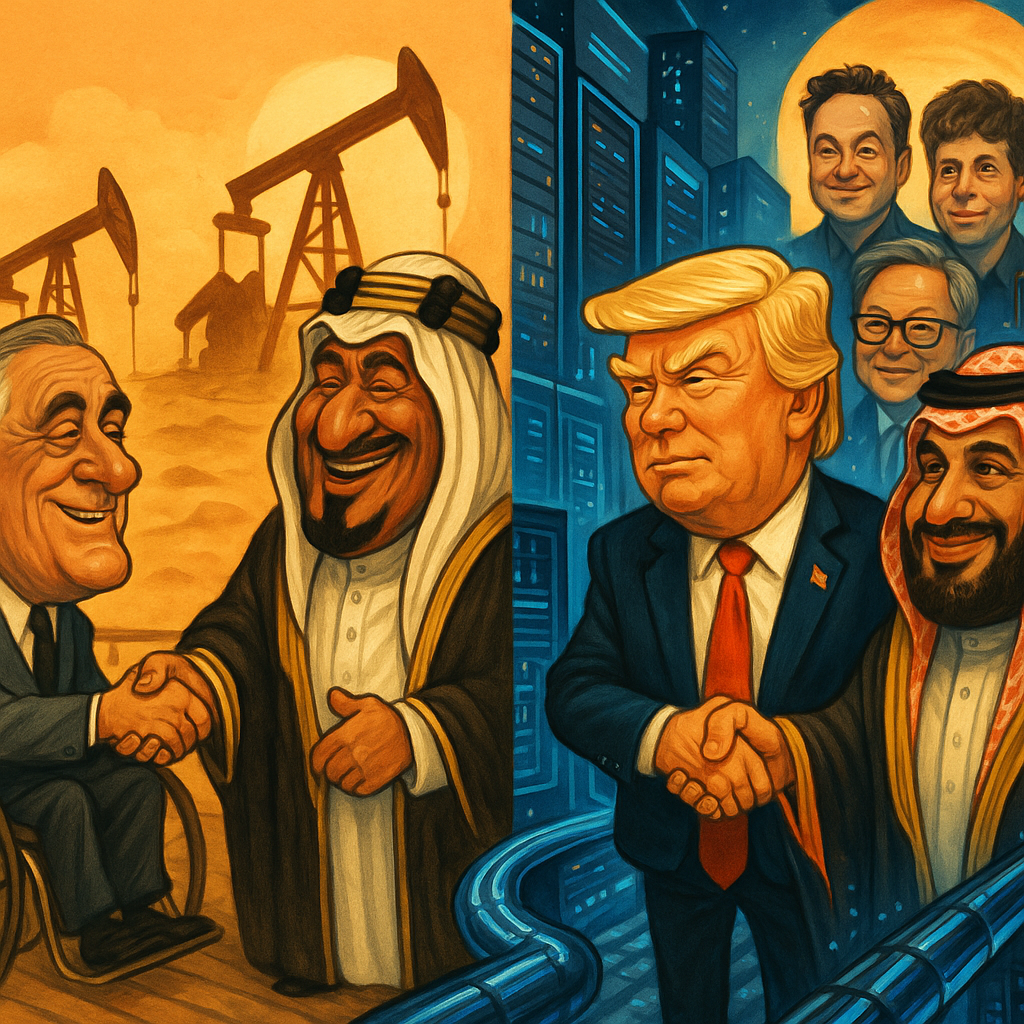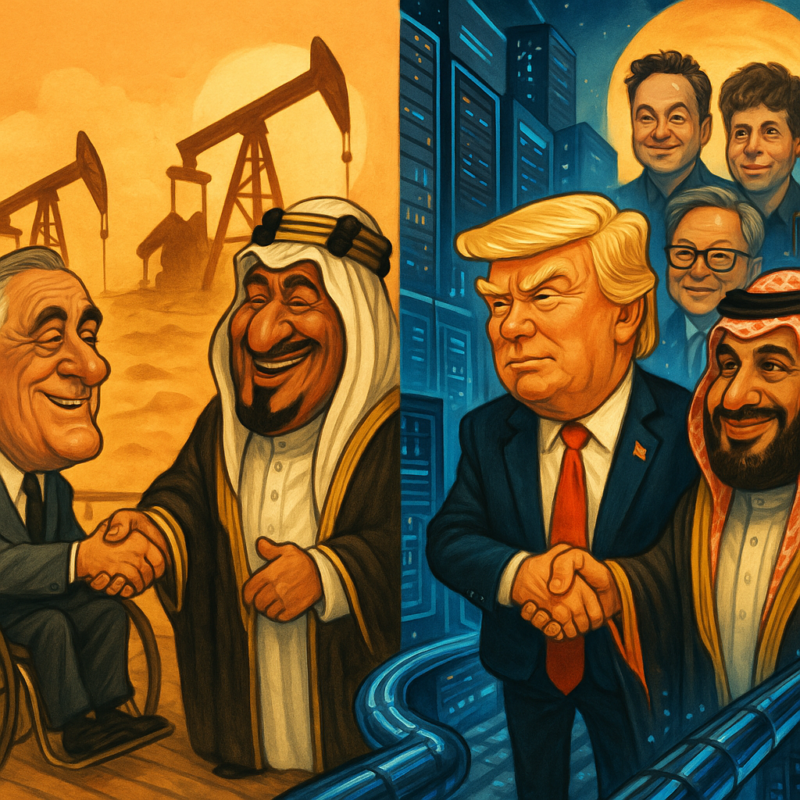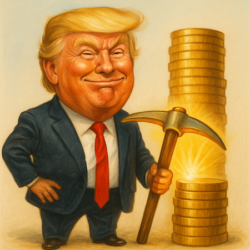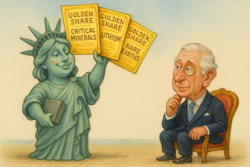 What do a wheelchair and a Boeing 747 have in common?
What do a wheelchair and a Boeing 747 have in common?
More than you might think…
It was February 1945 when Franklin D. Roosevelt quietly boarded a U.S. Navy cruiser and set out across the Red Sea to the Suez Canal. His destination wasn’t Europe. It wasn’t even the Pacific. It was Great Bitter Lake, Egypt, and his meeting was with King Abdul Aziz ibn Saud, founder and first King of Saudi Arabia.
No press, no announcement, strictly a “need to know” basis.
The meeting was primarily to do with Roosevelt trying to persuade the king to accept 10,000 Jews in Palestine, but as the two men sat down aboard the ship, exchanging views over dates and coffee, the more pressing reason for the cloak of secrecy came to light…
Oil.
FDR knew the post-war world would run on petroleum. The U.S. needed a reliable, long-term supply.
It turns out, the two leaders hit it off so well that Roosevelt, who would die just eight weeks after the meeting, gifted the king with one of his wheelchairs (as well as a DC-3 passenger plane). The king, in turn, gave the president gifts, including a diamond-encrusted dagger, perfumes, pearl jewellery, belts of woven gold thread and embroidered harem costumes.
It’s reported after the meeting the King said,
“This chair is my most precious possession. It is the gift of my great and good friend, President Roosevelt, on whom Allah has had mercy.”
That now-legendary handshake sealed America’s first great energy pact of the 20th century. It created a pact which delivered U.S. security guarantees in exchange for Saudi oil. It also prevented the UK from gaining control over Saudi oil. That deal underpinned the next 75 years of U.S. economic and geopolitical dominance… if only it had been Churchill that struck the deal, I do wonder what our would look like today.
Now, 80 years later, another American has just landed in the Middle East. And I can’t help thinking that this meeting (albeit nowhere near as secretive, in fact, quite the opposite) may have just as long lasting and significant ramifications for the global world order.
Except this time, it’s not oil he’s chasing.
It’s compute.
A new kind of energy
Donald Trump’s recent tour of the UAE, Qatar, and Saudi Arabia has been getting a lot of attention for all the wrong reasons.
While the mainstream media flip their lids over the “gift” of a 747 plane from Qatar to replace Airforce One, there’s a much bigger and important story bubbling away that is not getting the attention it deserves.
Let me ask you this…
In addition to Trump and his extended entourage being there, why do you think Elon Musk, Jensen Huang, Sam Altman, Lisa Su and Alex Karp are all there too? What do those four have in common?
Musk (xAI), Huang (Nvidia), Altman (OpenAI), Su (AMD), Karp (Palantir), these are all some of the most important and influential companies related to AI not just in America, but in the world.
They’re there to support Trump laying the groundwork for the next global “energy” pact, one that swaps barrels of oil for racks of AI chips.
We’re talking about Middle Eastern funded datacentres. Massive AI compute infrastructure. AI “superclouds”.
The Middle East is actively ramping up their demand for AI chips, AI components and AI tech to invest in the future of their region.
Saudi Arabia created a new company, HUMAIN to “drive AI innovation across the Kingdom”. It’s already partnering with Amazon for $5 billion, a deal with Nvidia for a 500-megawatt datacentre as well as 18,000 Blackwell AI chips, and a $10 billion deal with AMD.
I do find some kind of divine intervention that 80 years on Trump in the Middle East is akin to Roosevelt and King Ibn Saud in 1945. I believe what’s taking place now, the friendliness on display between the Kingdom and Trump is setting up the US and Middle East for the next 80 years.
But let’s be honest, a 747 is slightly bigger than a wheelchair…
The Diffusion Doctrine
This all comes at a critical moment for U.S. AI policy.
President Biden’s executive order on AI last year laid the foundation for what’s known as the “Diffusion Controls.” In short, they’re rules designed to prevent the uncontrolled export of U.S. AI chips, models and tools to foreign powers, especially adversarial ones (yes, you can read China there).
The Department of Commerce and DARPA are working on frameworks to define what constitutes a “frontier model,” who can access them, and how the underlying compute power should be regulated. A core part of this regulation is about limiting diffusion. i.e. making sure U.S. innovation doesn’t leak or get trained overseas without oversight.
The result is that Big Tech hates what’s coming (at least in its current guise).
In fact, nobody hates that wall more than Nvidia.
Nvidia’s executives have been some of the most vocal critics of the proposed restrictions. Jensen Huang himself has warned that overreaching regulation could stifle U.S. leadership, slow down commercial deployment, and simply force the next wave of AI to migrate elsewhere…including the very Middle East nations Trump is now visiting.
Now I ask you this, do you really think Trump wants to annoy the companies that are the lynchpin of US economic growth and opportunity? He’s not stupid. He knows that cutting down Big Tech at the knees, cripples his legacy in his second term.
He promised the stockmarket would boom in his second term more than his first, and while it’s been a rocky start, that’s just so he can let it rip from here. And that’s exactly what I see coming next.
Going through the gears
I believe at the culmination of this trip there will be a complete reset of the AI Diffusion rules. He’ll burn AI Diffusion to the ground, bring the Middle East in on the action, absorb their untold and seemingly limitless supply of cash and boost US AI stocks like there’s no tomorrow.
He wants an American-led, capitalised by Middle East wealth, controlled by U.S. rule, AI boom through infrastructure, licensing, and exports.
It’s the FDR playbook for modern times.
And if he succeeds?
AI stocks go vertical
The implications for U.S. chipmakers are enormous.
Imagine a Trump-friendly policy that explicitly allows U.S. chip exports to “friendly nations”, namely, those willing to host American-built datacentres and enforce IP safeguards. That opens the floodgates for the likes of Nvidia and AMD to sell top-tier silicon to Gulf-funded projects.
It means xAI’s next datacentre will likely be in Saudi or the UAE. It means Palantir (whatever it is they do) will be able to connect their AI platform into the entire region, no doubt with significant national security benefits as well.
It also greenlights U.S. hyperscalers like Oracle, and Google to expand their reach with G42, Aramco, and Qatari operations without the bureaucratic red tape.
It’s no coincidence that Oracle just announced a $14 billion investment in Saudi Arabia’s cloud infrastructure. Or that Google is backing a Saudi venture capital firm specialising in AI.
So, what does this mean for investors?
It means the 2024–25 AI cycle could have a second, third and fourth gear that I don’t believe is priced in yet.
My friend James Altucher has been ahead of this exact trend. He calls it “AI 2.0”—a new phase of artificial intelligence where capital, compute, and policy converge to create the biggest tech-driven wealth cycle of the decade. He’s put together a full breakdown of what this shift could mean for investors—especially those who want to position early. You can watch it here.
There’s no doubt AI is moving away from the opportunity in training and learning, to inference and understanding. That requires immense compute, immense investment, immense energy…all things that can be found in the Middle East.
If Trump reshapes the U.S. AI opportunity and continues to greenlight Middle East-backed AI infrastructure, the impact will be immediate.
I think in 80 years’ time we’ll look back on this trip as we do with Roosevelt’s secretive meeting with King ibn Saud in 1945.
FDR did it with oil. Trump might just do it with silicon.
Until next time,

Sam Volkering
Contributing Editor, Investor’s Daily




